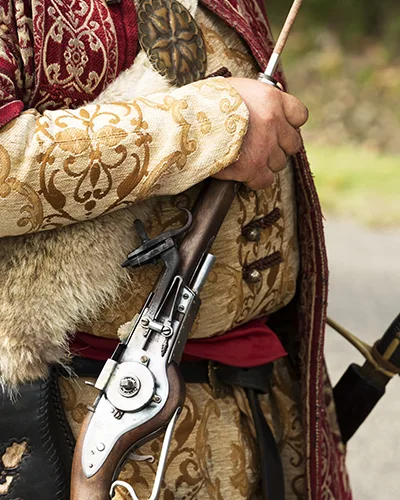FROM THE EARLY MIDDLE AGES TO THE MODERN NATION
Hungary can look back on an eventful and fascinating history, characterised by migration, kingdoms, foreign dominions and national uprisings. Over the centuries, the country at the heart of Europe has developed a rich culture and played a key role in European history.
Early times and land occupation

The history of Hungary begins with the conquest of land by the Magyars at the end of the 9th century. These Finno-Ugric tribes, led by Árpád, settled in the Pannonian Plain after arriving from the east. The year 896 is regarded as the symbolic date for the foundation of Hungary.
In the year 1000, the Kingdom of Hungary was officially founded under King Istvan I (Stephen, today honoured as a saint). Istvan converted to Christianity and ensured Hungary's integration into European Christendom, which had a strong political and cultural impact on the country.
Medieval prosperity and threats
Hungary developed into a significant power in Central Europe during the Middle Ages. Under kings such as Ladislaus I and Matthias Corvinus, the country experienced cultural and economic prosperity. Matthias Corvinus in particular was known for his modern administration and his promotion of science and art.
However, the country was also exposed to constant threats: The Mongol invasion of 1241/42 devastated large parts of the country. After the reconstruction, a new, more fortified settlement structure emerged.
In the 16th century, the defeat against the Ottomans in the Battle of Mohács (1526) led to the disintegration of the medieval kingdom. Hungary was divided into three parts: the Ottoman-occupied central Hungary, the Kingdom of Hungary under Habsburg rule and the Principality of Transylvania.
Habsburg rule and national aspirations
After the reconquest of the Ottoman-occupied territories in the late 17th century, Hungary became part of the Habsburg Empire. However, the Hungarian nation retained a strong sense of identity. The struggle for independence under Francis II Rákóczi (1703-1711) and the revolution of 1848/49 against Habsburg rule testify to the desire for national self-determination.
Although the revolution was suppressed, the Compromise of 1867 led to the foundation of the Austro-Hungarian Dual Monarchy, in which Hungary assumed an independent role.
20th century: Wars, losses and new beginnings
The First World War brought an end to the dual monarchy. The Treaty of Trianon in 1920 sealed heavy territorial losses for Hungary: around two thirds of the country's territory and many Hungarian minorities in neighbouring states were lost.
During the Second World War, Hungary fought alongside Germany, but switched sides in 1944. Nevertheless, the country was occupied by the Soviet Union and fell under Soviet influence after the war.
In 1956, the Hungarian people rose up against the communist government and Soviet occupation in the Hungarian People's Uprising. The uprising was bloodily suppressed, but became a symbol of the Hungarians' desire for freedom.
From the end of communism to the European Union
In 1989, parallel to the collapse of the Eastern Bloc, Hungary was one of the first countries to open the Iron Curtain and usher in the democratic transition. The Republic of Hungary was proclaimed and in 2004 the country joined the European Union.
Today, Hungary is a parliamentary republic whose history is deeply rooted in the relentless pursuit of independence and cultural identity.



